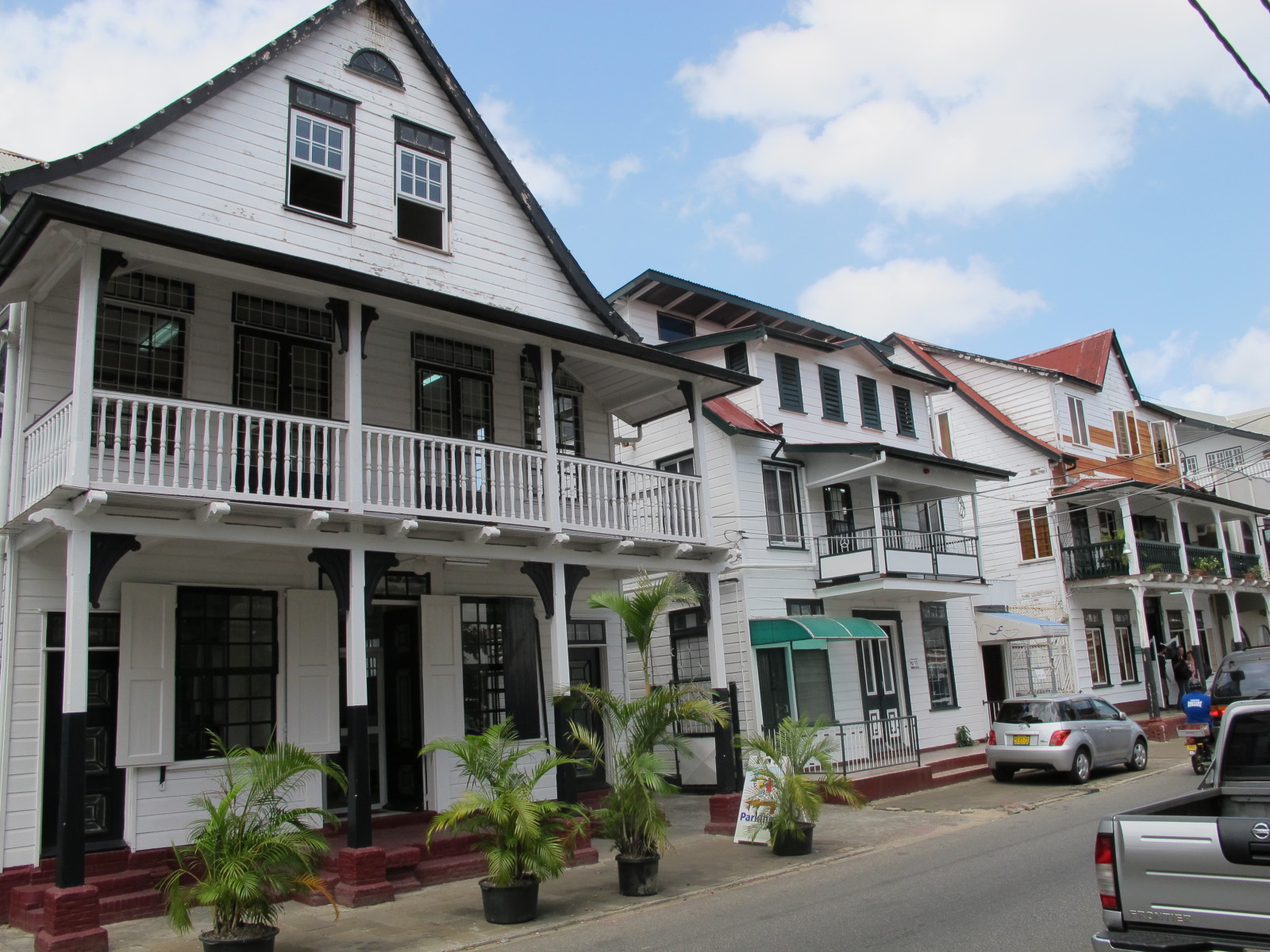Paramaribo
The capital city is a I vibrant town, but until this trip barely visited it. So I spent some time as a tourist to explore the ‘wooden city’ as Paramaribo is called due to its many old colonial wooden houses, churches, and other structures. The most remakable for me is the tallest and largest wooden church on the continent: the St Petrus Paulus Church. This amazing church has massive wooden domes, arches, and even the artifacts are made of wood.
The Henck Aaronstraat and Heerenstraat got the most colonial houses. Some where unfortunately used to detain or trade slaves. I couldn’t believe my eyes when I saw all these buildings restored and wel painted. The same happened at the Waterfront. Here terraces and dancing bars are situated right along the river. It’s a pleasant stroll which also passes by the well worth visiting central market. Most ministry buildings are situated here or just one block behind.
Although I’m used to botanical gardens I think Paramaribo’s Palmentuin makes up for it. This lush green oasis with tall palm trees a a haven from the hectic city centre. Still compared to most other large capitals, Paramaribo is clean and not as polluted. The Onafhankelijkheidsplein (Independance Square) houses the presidential palace and the Ministry of Forreign Affairs. My favourite thing is the Fort Zeelandia Museum (fortress) which runs free (English/Dutch) tours. A great guide told me about the history of the building where many important things happened in Suriname’s repetoir.
Clubs, pubs, restaurants are numerous and contribute to great night life I really enjoyed. Never I experienced such thing ever before in Suriname. The country is definitely changing.
Home of rice fields
No visit to Suriname is complete without visiting my family. It was great to see everyone again. I think it is also the best way to experience the Surinamese people. Contact is easily made and you might find yourself invited for a village party! And yes, these parties are always fun. Imagine yourself 300 km from the busy capital, driving through rice fields. This is the business of most people, who are in fact farmers. With all these rice fields mosquitos are usually thriving as well. Fortunately not this year 🙂
My cousins organised a trip to a lake which is called Bigi Pan. Brakkish water, surrounded by a lot of mangroves. This is an absolutely fantastic place for bird watching. I had a great time seeing most of the bird species. The red ibis is probably the most iconic bird here.
Besides being with family, spotting wildlife along the river and in the lake; there’s not much more going on. Although in the village there’s now a cyber cafe, a secondary school, and a police station. For most things we always head to Nieuw Nickerie, the provincial capital. Colonial and wooden houses, churches, and schools dominate the architecture. Recently many cafes and bars have opened their doors to enjoy either the river or a sea breeze with live music on the background and a beer in the hand.
